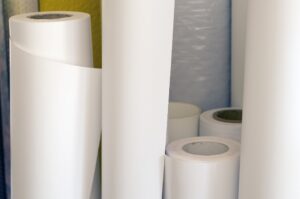
You use it almost every day but have you ever stopped and wondered, “how is paper made?”. Learn about the paper making process here in this article!
Paper is something you use almost every day but may take for granted. Paper helped spread knowledge across the world, and today is used for everything from literature and sanitation, to decoration and currency.
But despite its importance, many people still wonder: how is paper made? Where does papermaking originate from?
Keep reading to learn all about the paper making process.
The History of Paper
Before the invention of paper, people communicated by drawing symbols and pictures on stone, clay, and walls. But around 2,000 years ago, the first paper was made.
Cai Lun, a Chinese Imperial Court official, invented paper in 105 AD in Leiyang, China. Experts believe that his original concoction contained bark, hemp, and rags in water. After mixing them together, Cai Lun then mashed the ingredients into a pulp, wrung out the liquid, then let the mat dry under the sun.
Hundreds of years later in the 8th century, Muslims learned how to make paper after capturing a Chinese paper mill. The invention then spread to Europe, with the Spanish building the first paper mill in the West.
Paper mills continued to use the Chinese method of combining old rags and cloth into a mix. However, paper makers eventually began using wood, as it was cheaper and more plentiful.
Due to technological limitations, the paper made throughout history was coarse and unrefined. As it aged, the lignin present would also cause the paper to turn yellow. Today, paper produced is smooth, soft, and doesn’t change color with age.
So how is it made these days?
How Is Paper Made? It Starts With Pulping
Today, the papermaking begins with the removal of bark from logs, since it cannot be used in the process. To prevent high levels of water wastage, any water used is filtered, treated, then reused to treat other logs. The machinery then chips the now bark-less logs into small pieces.
The logs are then cooked in acid. This separates the wood fibers from an organic polymer found in plant tissues called lignin. This process creates pulp, which is a thick, sticky, and unrefined version of the paper. It’s also where the term “pulping” comes from.
The pulp is then cleaned again with water to ensure that there is no lignin. This treatment also causes the paper to turn white.
If the paper mill is using the pulp to create products such as magazines or newsprint, the papermaking process has finished. But creating a premium paper requires the pulp to undergo more work.
Papermaking
If the pulp needs to be in a more refined form, it is then pumped into a papermaking machine. These machines are several times longer than an Olympic-sized swimming pool and are also several stories high.
The machinery then pours the pulp into a slit over a moving wire mesh, which works to remove water. There, the fibers stretch and begin to form into thin sheets.
After taking shape, other machinery then pushes the sheets into the press section (at a speed of 60 mph). Here, the machinery presses out around 50% of the remaining water content, with much of the water then being recycled.
After being pressed, cast-iron cylinders then dry the sheets by using temperatures of over 100 degrees Celsius. Infrared radiation also works to remove excess or residual moisture present.
For premium paper products, the papermaking journey still hasn’t finished!
Finishing and Packaging
To improve the quality and properties of the paper, machinery then applies a variety of different chemicals. They then wind the paper into large reels. As the average consumer doesn’t need a massive sheet of paper, the sheets are then cut into smaller pieces.
These smaller pieces then undergo further processing before being wrapped and packed into containers. They are then shipped to wherever they need to go.
Webco is one example of a company that designs industrial-grade tubing frequently used in pulping and papermaking. If you want to learn more about them, check it out.
The Future of Paper
It remains to be seen what the future has in store for paper. Although it’s been used for thousands of years, some people believe that paper will one day become obsolete.
As technology continues to advance, more and more information is stored digitally, as opposed to on print. Today, if you want to buy a book, you can do so instantly on your phone. If you want to check the latest current events, a quick trip to the BBC website is all you need to do.
Displays are also continuing to get cheaper and more diverse. Modern screens are flat, can bend, and some can continue to display an image after a device is powered off. Eventually, the price of a screen may be the same or cheaper as the price of paper.
Yet others feel that paper can never be replaced. While ebooks and virtual information are convenient and more accessible, some aspects of paper cannot be replicated. Paper has imperfections, grain, and even smell, especially if its older.
The physical paper also allows you to make notes on it with a ballpoint pen or a pencil. That sensation is something that virtual imitations have yet to achieve.
Appreciate Paper the Next Time You Use It
Paper has been a part of human history for over 2,000 years. Originating in China then spreading across the world, it has allowed people to do a variety of important tasks.
Many early humans had to wonder: how is paper made? Yet due to the modern paper manufacturing process, most modern humans do not.
What do you think the future of paper will be? Do you think that it’ll one day be obsolete? Let us know!
Check out some of our other blog posts to read other guides and learn about different processes.
